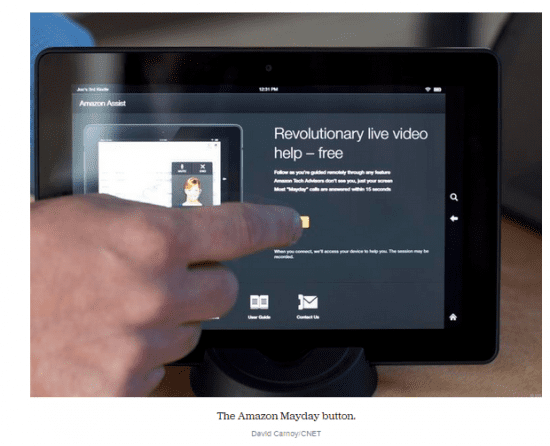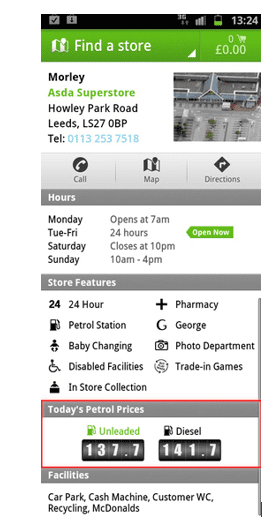How mobile marketing can be used to support customer service
A lot of attention is given to the way mobile devices have changed the way we communicate at work and how marketers can target consumers. But the big secret of mobile communications in today’s organisation is the impact on customer service.
Most contact centre systems and processes are still designed around the need to handle high volumes of customer calls via the landline. But the new mobile customer behaves very differently. The mobile device, with the new features it brings and ‘always on’ connectivity, affords huge power to the customer. More often than not mobile customers are looking for speed and convenience, whatever channel they choose, whether online self-service or a conversation with an agent.
It’s no coincidence that the companies that have innovated most in this space are those whose mantra has always been about serving the customer first and working back from that philosophy. Between them, Apple and Google own the mobile ecosystem. Meanwhile Amazon is approaching it differently, but with innovations like Mayday on the Kindle Fire tablets it has got right to the heart of tackling the issue by creating a way for customers to communicate with the business directly and easily, within their device, using the features it affords (in that case video calling).
On Amazon, customer calls via the Mayday button are answered within 10 seconds.

Understanding the mobile customer
But there are some simple steps that any business can take to become more customer-centric by understanding the needs of the mobile customer. Mobile has given customers the ability to interact with brands anywhere, at any time, via a choice of communication channels in the palm of their hand, creating new opportunities to spot, target and engage customers across.
A growing number of customers are using multiple channels to search, find and buy. A consumer may be watching television, whilst browsing the internet on a tablet device, as well as having a smartphone close to hand for texts, IM and calls. When previously a customer would have to wait for a relevant time to buy something, we are now in the age where we want (and get) things right now.
Optimising the customer experience
Customers are looking for choice and convenience and that means providing the information they need as quickly as possible. Companies have a huge opportunity to focus on optimising the aspects of customer experience that are meaningful in the lives of their customers. This may be a small feature in an app, for example Asda, showing you petrol prices for your nearest store on its app homepage

The mobile customer is often more likely to communicate via social media than a voice call, providing a significant opportunity to reach your customers when and where they are most receptive to your brand.
By integrating social media with your contact centre operation you can respond to customers by their preferred channel while reducing call volumes. And it does not necessarily mean a big technology investment or teams of people monitoring social media.
Today’s technology can automatically stream posts, tweets and comments to the right contact centre queue. Social media enabled contact centres report a reduction in call volumes by 12-15%.
Customer centric communication in the mobile age stretches to outgoing too. Adapt your customer communications to the channels and times most appropriate to them. That means automating call flows so that someone logging an interest via the website at 2am is not rudely awakened at 8:00 am when the contact centre opens. It also means considering technology to screen mobile numbers before ringing, to ensure they are not roaming, which could implement a charge for the customer, or switched off.
Thanks to innovative cloud based technology providers, solutions are now available to meet the needs of the mobile customer without a major infrastructure investment. But to make the most of this opportunity customer service operations need to design their processes around the needs of their customers.
Quick Win: How to optimize your mobile lead generation
Learn why lead generation is perfectly suited to mobile, how mobile behaviour differs from desktop internet use, and best practices for mobile user experience. Start nurturing prospects no matter where they go by optimizing your mobile lead generation.
Access the How to optimize your mobile lead generation quick win
 Thanks to David Ford for sharing his advice and opinions in this post. David Ford is the Managing Director at Magnetic North. He joined in 2013 to lead the next phase of the acceleration and growth of the company. David has many years of experience in the telecoms and technology arena, working in both operational and advisory capacities with a wide range of businesses from startup to listed companies on strategy, funding, operations and corporate development. You can follow Magnetic North on Twitter, follow on LinkedIn or hang out on Google+.
Thanks to David Ford for sharing his advice and opinions in this post. David Ford is the Managing Director at Magnetic North. He joined in 2013 to lead the next phase of the acceleration and growth of the company. David has many years of experience in the telecoms and technology arena, working in both operational and advisory capacities with a wide range of businesses from startup to listed companies on strategy, funding, operations and corporate development. You can follow Magnetic North on Twitter, follow on LinkedIn or hang out on Google+.





 Thanks to David Ford for sharing his advice and opinions in this post. David Ford is the Managing Director at
Thanks to David Ford for sharing his advice and opinions in this post. David Ford is the Managing Director at 

